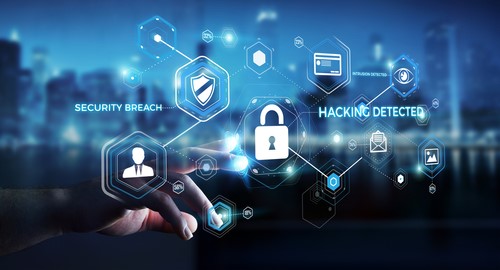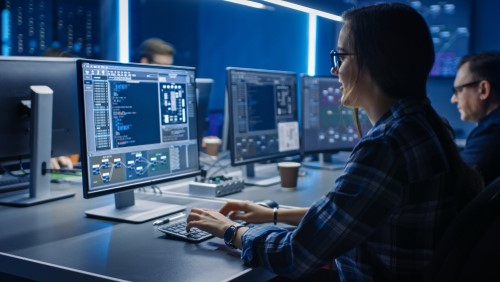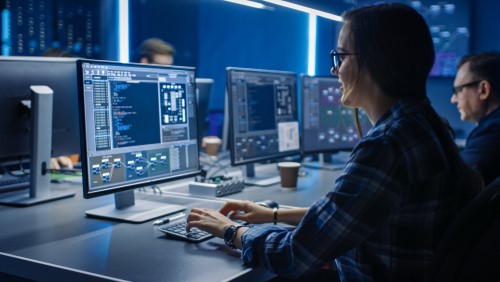As technology gets more complex and people are spending more time interacting with others online, sophisticated cyber-attacks are no longer events that only affect the world of high-tech industries. A cyber attack and subsequent data breach can impact anyone who uses an online service – and in the modern world, that describes essentially everyone. As cybercriminals gain access to emerging technology, what can we expect future cyberattacks will look like?
What should people be looking out for – and what kind of cybersecurity do we need to protect ourselves from the next generation of malware and cyber warfare?

THE LATEST, MOST COMMON CYBERATTACKS
Focus Technologies points out that cyber-attacks do not have to be major events such as a ransomware attack. Some of the latest, common cyber attacks are less noticeable threats like a phishing attack, data breach, or malware attack. These attacks fly under the radar more easily but are nonetheless dangerous when carried out by malicious actors. Phishing can be used to create a cyber vulnerability or expose sensitive information. Such vulnerabilities can even be used in cyber warfare to target critical infrastructure.
They say, “the big cybersecurity trend we are going to see in this next year is two-factor authentication for accessing on-site resources remotely.” This means when clients are accessing their office work from home, rather than in-house, there will be a need for two-step authentication to protect against cybercrime and ensure that company’s data is protected.
Two-factor authentication cybersecurity is now required by many insurance companies and is standard practice for cybersecurity professionals because it stops malicious attacks that are trying to sneak in using usernames and passwords. Hackers can easily exploit a single security hole, but it’s much more difficult to gain access through two separate routes. By adding a second layer of security, two-factor authentication places a dead-end on security holes and makes any cyber-attack much more difficult.
Another cyber attack method exploits open-end bill pay, where you simply enter a number and then pay that number. This can be used by hackers to test credit card numbers at scale and find usable numbers to sell. This is simply a brute force tactic to find what works through trial and error. If they have something, they think maybe valid they are going to want to verify that and so do this by trying it out. Once the data they have is verified then they are going to take it and go off to hit a bigger purchase. They are going to use someone else’s payment gateway to verify things and then abuse those findings.
Another modern cyber threat is smishing. Smishing happens when a hacker sends a file or picture via text SMS. While most people understand not to open things from unknown numbers, they can be even more cautious by upgrading their security by using a third-party application installed on the phone rather than just a regular phone text program. Third-party applications help keep things secure.
STAYING SAFE ONLINE
While artificial intelligence (AI) security is becoming more prominent, there are older anti-virus programs that can be used such as E Set. They will catch 95% of invasive malware. These programs do analytics, use your aesthetics and other things to determine what is malicious and what is not. It links specific groups of behaviors and targets things that don’t make sense to the program.
There are more modern approaches that involve analyzing large amounts of information if a more extensive program is needed. This is when AI is helpful if the content is too much for one person or small group to deal with. AI is also looking for patterns that align with malicious behavior. Some companies are using analytics to target attacks, but it should also be noted that these programs are very expensive and can start at $20,000 before annual renewals and add-on costs. However, while they are expensive these are the cybersecurity programs necessary to stay ahead of emerging cybercrime and cyberwarfare threats. Large corporations need a high level of cybersecurity sophistication to track and eliminate all security vulnerabilities, including unintentional employee error. However, this is cost-prohibitive for many businesses.
Most current cyber-attacks can be avoided through basic attention to detail and two-factor authentication. Companies and individuals don’t have to do a dark web search to find what is online. In reality, just be smart. Make sure passwords are not really old and that passwords are changed on a regular basis. Keep an eye on all accounts for activity that isn’t expected. It’s not hard to maintain online integrity with these simple steps. Don’t get hooked in by companies who say they are selling their ability to do a dark web search. No one needs it since of course, you are going to be out there if you use the internet.
CYBER WAR, CYBER WEAPONS
Cyberwar and cyber weapons are hyped-up terms. Cyberwarfare describes when nation-states utilize the same toolset as common cybercriminals, but at a military scale with the intention of gaining intelligence or otherwise harming an opposing nation.
The only meaningful difference between cyber warfare, cyber terrorism, and cybercrime is who is doing the hacking and why. Whoever is attacking and whatever their reason, cyber-attacks can do significant harm to the economy and critical infrastructure. To protect against such attacks, cyber defense is rapidly becoming an essential part of national security.
STEPS THAT BUSINESSES AND INDIVIDUALS NEED TO TAKE TO BE SAFE
Businesses need to sit down and assess what parts of their business are critical to maintaining operations. Then the assessment moves over to deciding what information is crucial and what cybersecurity measures are necessary to protect it. The conversation must determine how best to protect those processes and operations.
For example, when companies have remote teams who must access a particular application process or customer support, that remote access needs to be secure at every stage. It is about protecting customer and company data from malicious actors. Looking at data and offsetting the threats of how it can be exploited.

FINAL THOUGHTS
Businesses must take a hard look at how they are protecting their data against the future of cyberattacks. Best practices should include multi-factor authentication, setting up appropriate firewalls, and blocking everything that a person does not need to access. A company should establish what their attack envelope or plane is and then aim to reduce it as much as possible. This needs to be balanced with the company’s budget. Not every company needs each and every standard of cyber protection in place. That could cost hundreds of thousands of dollars. The future of cybersecurity for a company lies in what their actual requirements are versus their budget. These two things need to line up. And if they do not line up then the next step must be figuring out how to adjust one or the other, so the cyber protection works.
